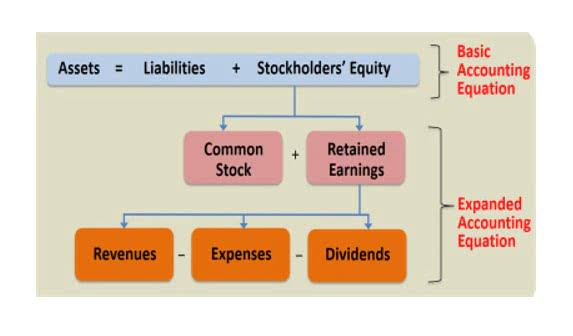
Therefore, be sure to be as precise as possible when determining the values to be used for cash flow projections before calculating NPV. While NPV offers numerous benefits, it is essential to recognize its limitations, such as its dependence on accurate cash flow projections and sensitivity to discount rate changes. By considering the time value of money and the magnitude and timing of cash flows, NPV provides valuable insights for resource allocation and investment prioritization. Net Present Value is a critical tool in financial decision-making, as it enables investors and financial managers to evaluate the profitability and viability of potential investments or projects.

Present Value of a Growing Perpetuity (g = i) (t → ∞) and Continuous Compounding (m → ∞)
Thus, the Present Value ultimately just reflects how much something is worth right here, right now, in the present. In this article, we’re going to explore how to calculate what is the present value formula Present Value. It’s a pretty in-depth article, so you might want to grab a cup of tea. If you’re just looking for the Present Value formula, we’ve included it just below.
Present Value Formula and Calculator
Present value calculations, and similarly future value calculations, are used to value loans, mortgages, annuities, sinking funds, perpetuities, bonds, and more. These calculations are used to make comparisons between cash flows that don’t occur at simultaneous times,[1] since time and dates must be consistent in order to make comparisons between values. The project with the highest present value, i.e. that is most valuable today, should be chosen. Higher interest rates result in lower present values, as future cash flows are discounted more heavily.
Why Should You Choose a Project With a Higher NPV?
It is also used to evaluate the potential profitability of capital projects or to estimate the current value of future income streams, such as a pension or other retirement benefits. Small changes in the discount rate can significantly impact the present value, making it challenging to accurately compare investments with varying levels of risk or uncertainty. In many cases, investors will use a risk-free rate of return as the discount rate. Treasury bonds, which are considered virtually risk-free because they are backed by the U.S. government. Present value is based on the concept that a particular sum of money today is likely to be worth more than the same amount in the future, also known as the time value of money. Conversely, a particular sum to be received in the future will not be worth as much as that same sum today.
The Time Value of Money
Since a simple mistake can lead to incorrect results, it’s important to take care when inputting data. By comparing NPVs, decision-makers can identify the most attractive investment opportunities and allocate resources accordingly. We’re going to assume that you’re more or less alright, so let’s actually just think about that equation in a little more detail.

Drawbacks of NPV:

Net present value is a financial calculation used to determine the present value of future cash flows. It takes into account the time value of money, which means that a dollar today is worth more than a dollar received in the future. Use this online PV calculator to easily calculate the Present Value, a.k.a. Present Worth of a future sum of money or stream of cash flow based on the rate of return (discount rate) and the investment term. It accounts for the fact that, as long as interest rates are positive, a dollar today is worth more than a dollar in the future.
- Use this PVIF to find the present value of any future value with the same investment length and interest rate.
- This is because money can be put in a bank account or any other (safe) investment that will return interest in the future.
- In this case, decision-makers should consider alternative investments or projects with higher NPVs.
- Net present value is a financial calculation used to determine the present value of future cash flows.
- Understanding PV is essential for making informed decisions about the allocation of resources and the evaluation of investment opportunities.
By submitting this form, you consent to receive email from Wall Street Prep and agree to our terms of use and privacy policy. Now you know how to estimate the present value of your future income on your own, or you can simply use our present value calculator. It applies compound interest, which means that interest increases exponentially over subsequent periods.
- And it’s called the discount rate because this is the rate that we’re using to discount the future cash flow.
- Thus, the Present Value ultimately just reflects how much something is worth right here, right now, in the present.
- NPV is the result of calculations that find the current value of a future stream of payments using the proper discount rate.
- NPV uses discounted cash flows to account for the time value of money.
- NPV is widely used in capital budgeting to evaluate the profitability of potential investments in long-term assets, such as machinery, equipment, and real estate.
- Be sure that you don’t include the year zero cash flow (the initial outlay) in the formula.
- PV is used to evaluate and compare different investment opportunities by calculating the present value of their expected future cash flows.
For instance, when someone purchases a home, they are often offered the opportunity to pay points on the mortgage to reduce insurance payments. Keen investors can compare the amount paid for points and the discounted future interest payments to find out. Moreover, inflation devalues the purchasing power of today’s currency as time goes on.
Compute the net present value of money with WolframAlpha
- Alternatively, when an individual deposits money into a bank, the money earns interest.
- However, what if an investor could choose to receive $100 today or $105 in one year?
- For this reason, payback periods calculated for longer-term investments have a greater potential for inaccuracy.
- If there are risks involved in an investment this can be reflected through the use of a risk premium.
- While useful, it is dependent on making good assumptions on future rates of return, assumptions that become especially tricky over longer time horizons.
- Whichever Excel method one uses, the result obtained is only as good as the values inserted in the formulas.